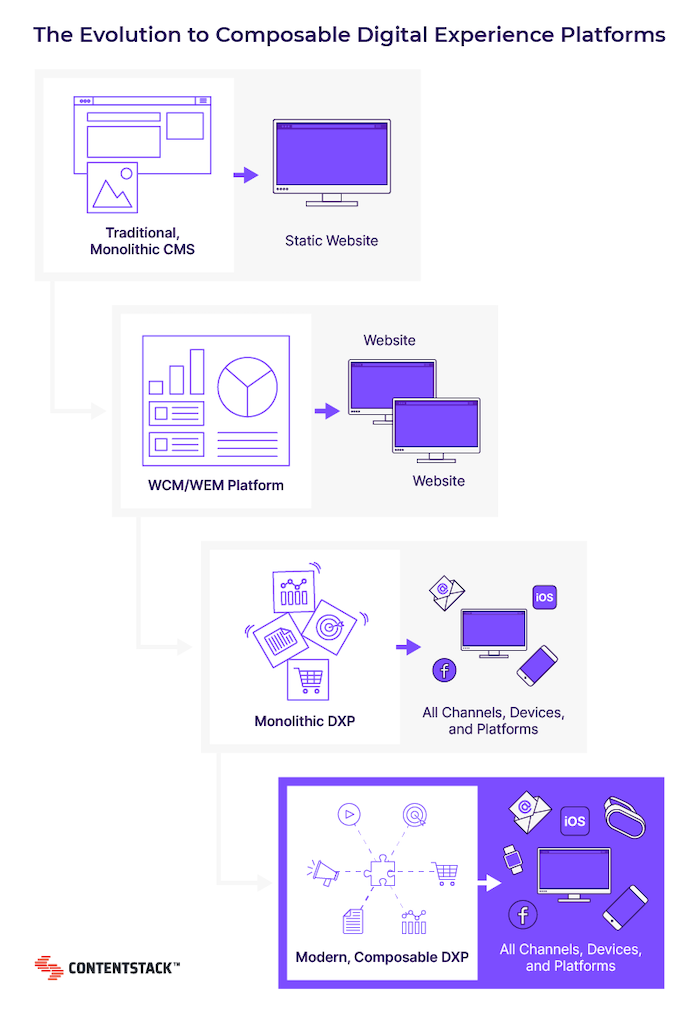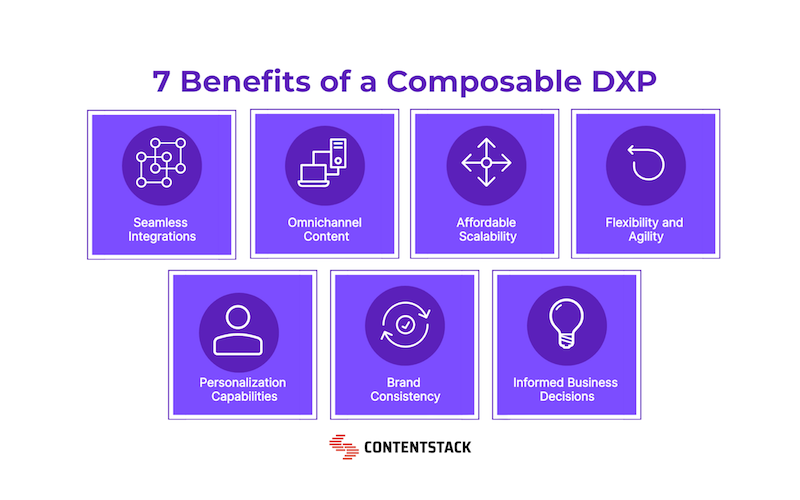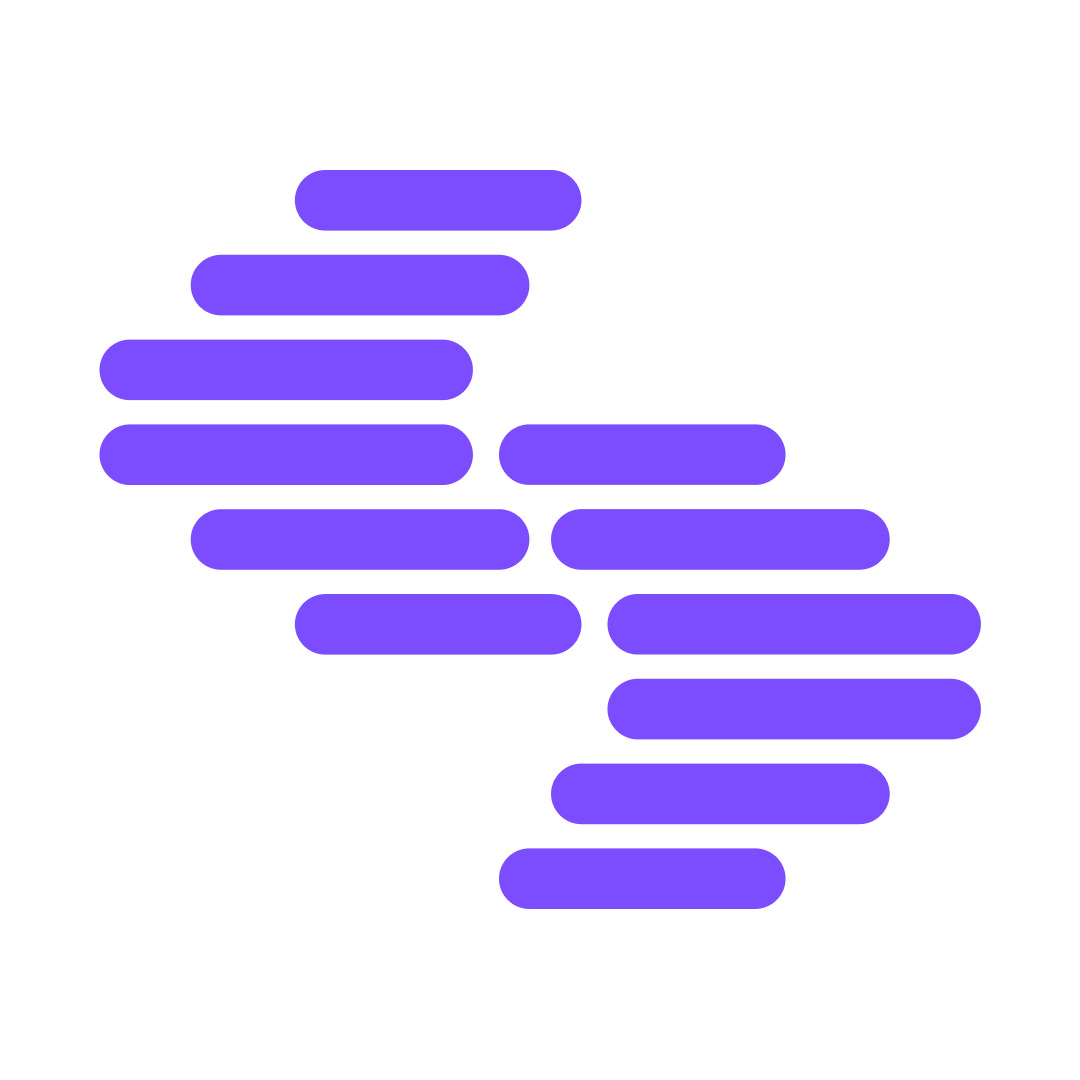DXP vs CMS demystified: Make an informed choice

When reseraching DXP vs CMS, learn why a digital experience platform or DXP is about delivering digital experiences, which come with improved personalization, integrated solutions and scalability issues. Talk to us to learn how to choose the best platform for your business.
Highlights
You’ll learn about:
- CMS focus: CMS helps you create, manage and deliver content
- DXP advantages: DXP offers expanded capabilities like personalization, omnichannel experiences and advanced analytics
- Technology and adaptability: DXP features agility, modularity and AI-driven personalization, surpassing CMS' limited adaptability
- User experience: DXP improves user engagement through personalized experiences and data-driven insights, which a CMS cannot match
Which is more favorable for your business?
If you’re a start-up or small business, using a CMS like WordPress is acceptable. However, enterprise businesses should choose a DXP like Contentstack for its customer data management and superior customer experiences.
You've heard the acronyms CMS, WCM and DXP. While they all serve a different purpose, they all fall under the umbrella term content management systems.
- WCM: Web content management system
- DXP: Digital experience platform
- CMS: Content management system
As traditional CMSs fail to meet digital customers' expectations of personalized content and contextualized digital experiences across multiple touchpoints, you need an alternative. That’s why companies shift to headless CMS and DXP platforms. While both CMS and DXP provide modern content design, they ensure a seamless experience across every digital touchpoint when customers interact with your brand. Understanding DXP vs CMS is essential before implementation.
So, let’s first discover DXP vs CMS and then understand which is best for your business and why.
What is a content management system (CMS)?
A CMS is a content management system that helps content creators upload and modify content to your website. Traditional CMSs don’t require any coding knowledge. With CMS, you manage your company’s digital assets, like creating, storing and distributing digital content. It powers your company’s website and applications. Over the years, CMSs have given businesses control of their content without knowledge of any coding language, HTML or CSS.
One of the highlights is the ability to build and manage websites using templates. You can even integrate various plugins and manage permissions.
Key components of a CMS include:
- Content management application
- Content delivery application
Examples of CMS
- WordPress
- Joomla
- Drupal
What is a digital experience platform?
A digital experience platform (DXP) delivers seamless and personalized digital experiences across multiple touchpoints and channels. DXPs are modern solutions that elevate experience and functionality. These platforms support the management, composition, delivery and optimization of digital experiences. While a DXP performs all the functions of a headless CMS, it provides a tool for creating never-like experiences. Modern DXPs like Contentstack support the entire customer journey across every digital touchpoint. With digital experience platforms, you deliver the right content at the right time to the right customer.
Key components of a DXP include:
- Headless CMS
- Omnichannel marketing features
- Social media integration
- Data management and analytics
- Personalization tools
- AI and automation features
- eCommerce integration
- Scalable cloud-based solution for high availability
- Customer relationship management (CRM)

When comparing DXP to CMS, understand that DXP adds more value than CMS because it gives your business more control over your digital experience offerings and helps you acquire and retain more customers.
Examples of DXP platforms
Contentstack
Contentstack is the leading DXP platform because it offers a flexible content management system for creating and sharing content. Its API-first approach provides quick tool integration, enhances personalization and allows seamless omnichannel delivery.
Case study: How did Contentstack DXP help MongoDB drive modernization?
MongoDB, established in 2007, modernized its tech stack by merging multiple content management systems into a single, unified CMS. After a thorough evaluation, the company chose Contentstack’s Composable DXP to migrate over 250 pages on its main website within three months. This transition helped MongoDB deliver innovative web experiences faster, enhancing localization and content management capabilities.
The company is now focused on migrating thousands more pages and leveraging AI for personalization and automated content tagging, showing how a modern tech stack can facilitate business evolution and adaptability.
After using Contentstack, Bill Mitchell, Senior Director, Web Strategy and Technology, MongoDb said,
“Our team was excited to find a solution that better supported the business's needs today and into the future.”
Read the complete case study here.

Start your free trial with Contentstack today. Transform your brand's digital presence with Contentstack's open MACH architecture and industry-leading technology. Witness a significant reduction in publishing and development time, and elevate your content management. Start your free trial now.
Optimizely
While Optimizely is recognized for its robust experimentation tools and powerful analytics, it lacks the same level of content management flexibility as Contentstack.
Sitecore
Sitecore helps you with content management, but its integration with marketing automation feels challenging compared to Contentstack’s efficiency.
Adobe Experience Manager
Adobe Experience Manager (AEM) offers various features, but its content complexity and asset management overshadow its effectiveness. However, the Contentstack digital experience platform is better because of its intuitive design and data-driven capabilities. This offers a more dynamic, personalized experience without the added complexity.
DXP vs CMS: The key differences
Though both DXP and CMS are part of content management and delivery, they are different. The key differences between legacy CMS and DXP solutions are:
Platform architecture
Traditional content management systems are monolithic because a single platform houses all the features. These systems are available as a single vendor, leaving no scope for external integrations or other vendors. In a traditional CMS, front-end presentation is closely tied to the back-end content management and storage. While this makes deployment easier, it makes your systems less scalable and flexible. On the other hand, DXPs have a headless architecture that separates the front and back end, helping you deliver content across different channels.
User experience
DXPs create smooth and personalized experiences across different channels, allowing dynamic interactions. You have the power to adjust to how individual customers behave. CMS platforms are more static, primarily focusing on content distribution without offering personalization based on customer data.
Integration capabilities
When you use DXPs, you integrate various marketing, sales and customer service tools, creating a tech stack that provides a seamless customer experience. With 53% of customers willing to pay extra for customer experience, a DXP is your best choice. Although CMS platforms connect with marketing tools, the integration isn’t as flexible as that of DXPs.
Target audience
Content creators and marketers who manage multiple websites primarily use a CMS. A DXP appeals to marketers, data analysts, and professionals in customer experience who work to improve customers' journeys.
Technology and adaptability
A CMS manages content, especially when enhanced with third-party plugins. However, its structure offers limited adaptability. DXPs add agility, helping you take a modular approach that responds to shifts in customer behavior. As many DXPs use headless architecture, you can integrate cutting-edge tools and deliver personalized experiences across various channels.
Personalization
When you use AI and machine learning within your DXPs, you adjust your content and user experiences in real time. It helps your business respond to changing customer needs. While CMS platforms offer basic customization options, they lack the depth required for personalization, limiting their effectiveness in driving user engagement. Those looking to build deeper connections with their audience and cultivate loyalty prefer DXPs over a CMS.
Summary of DXP vs CMS
Aspect | CMS | DXP |
Focus | Content creation, management and delivery | Broader capabilities, including customer data management, personalization, marketing automation and omnichannel experiences |
Functionality | Content storage, workflow management, publishing | Integrates multiple digital tools for seamless customer experiences across various touchpoints |
User experience | Efficient content creation and management | Enhances overall digital experiences through personalization and data-driven insights |
Integration | Can integrate with third-party tools | Designed for easy integration with various systems, providing a unified platform for marketing, sales and customer service0 |
Personalization | Limited capabilities | Advanced personalization using customer data for targeted content and experiences |
Analytics | Basic analytics related to content performance | Comprehensive analytics covering customer behavior, engagement metrics and campaign effectiveness across multiple channels |
Scalability | May lack scalability for complex digital experience needs | Built for scalability, allowing businesses to grow and adapt their digital strategies efficiently |
Cost | Generally more cost-effective | Can be more expensive due to advanced features and broader functionality |
Contentstack: Your partner in scaling digital experiences. Twice named a Leader in Forrester's composable DXP award, Contentstack offers an innovative approach to DXP. Experience our 100% microservices architecture and API coverage that allows instant scalability. Start your free trial today.
Which is better for your business: DXP or CMS?
Understanding whether a DXP or a CMS is right for your business depends on these factors:
Budget
A CMS like WordPress is free to use for start-ups and small businesses. It's user-friendly and cost-effective, so you can easily publish content. But for larger enterprises with complicated digital ecosystems, a DXP like Contentstack is the best.
Integration
A DXP is the optimal solution for businesses that need a deep level of connectivity with other systems. With a DXP, you fulfill complex and ever-changing digital customers' requirements. How? DXP offers integration features and headless architecture, which is not true with a traditional CMS.
Scalability
If your business anticipates growth in the coming years, a DXP is a must-have. A traditional CMS platform scales less efficiently.
User experience
A DXP provides a personalized experience and increases user engagement. They also provide more advanced personalization than monolithic CMS platforms.
FAQs
What is the difference between DXP and CMS?
A CMS creates and delivers content and a DXP works on the context experience and includes elements like targeting, tracking and promoting your content.
What does DXP stand for?
A DXP stands for digital experience platform. It helps you create, manage and optimize your customer’s digital experiences.
What is the difference between DXP and CDP?
A DXP manages digital experiences across various channels, but a customer data platform (CDP) collects and manages customer data from various sources to build a unique customer profile.
Learn more
The fight is not between a DXP and CMS but between choosing the best technologies to improve your customer experience. As a result, many businesses rely on Contentstack’s DXP, which provides the necessary tools to navigate success. Talk to us to learn why DXP platforms are far better than traditional CMSs and how we can help.
About Contentstack
The Contentstack team comprises highly skilled professionals specializing in product marketing, customer acquisition and retention, and digital marketing strategy. With extensive experience holding senior positions at renowned technology companies across Fortune 500, mid-size, and start-up sectors, our team offers impactful solutions based on diverse backgrounds and extensive industry knowledge.
Contentstack is on a mission to deliver the world’s best digital experiences through a fusion of cutting-edge content management, customer data, personalization, and AI technology. Iconic brands, such as AirFrance KLM, ASICS, Burberry, Mattel, Mitsubishi, and Walmart, depend on the platform to rise above the noise in today's crowded digital markets and gain their competitive edge.
In January 2025, Contentstack proudly secured its first-ever position as a Visionary in the 2025 Gartner® Magic Quadrant™ for Digital Experience Platforms (DXP). Further solidifying its prominent standing, Contentstack was recognized as a Leader in the Forrester Research, Inc. March 2025 report, “The Forrester Wave™: Content Management Systems (CMS), Q1 2025.” Contentstack was the only pure headless provider named as a Leader in the report, which evaluated 13 top CMS providers on 19 criteria for current offering and strategy.
Follow Contentstack on LinkedIn.






.svg?format=pjpg&auto=webp)
.svg?format=pjpg&auto=webp)
.png?format=pjpg&auto=webp)






.png?format=pjpg&auto=webp)


